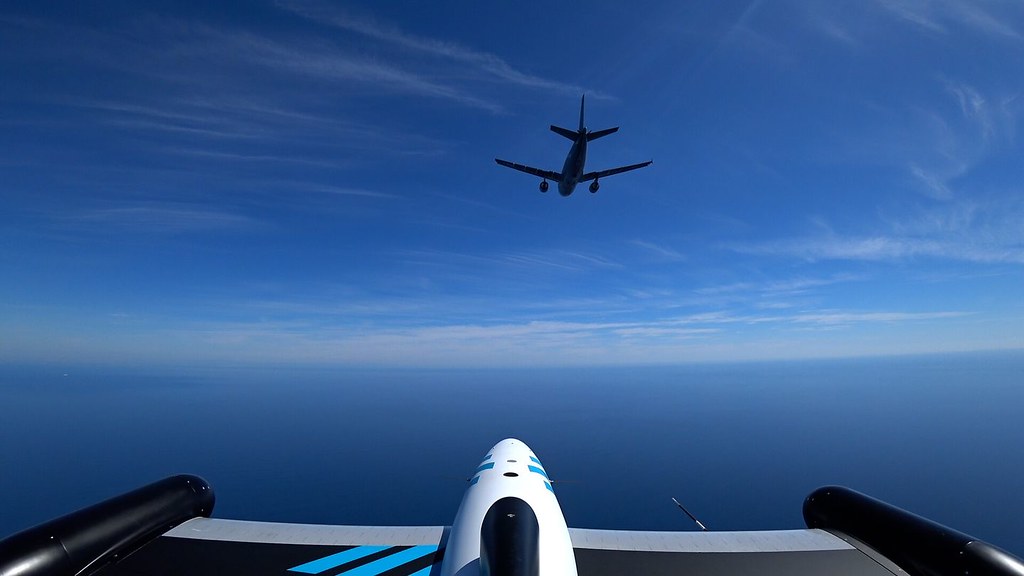Tests in Spain of automated aerial refueling with artificial intelligence
Aerial refueling is a capability that different air forces have to considerably increase their radius of action.
Today there are two in-flight refueling systems: the hose and probe system (used by Spain and the United States Navy, among other operators) and the pole system (used by the United States Air Force). USA and by other air forces). Both systems require a great concentration of crews, both on the plane that receives the fuel and on the tanker plane that supplies it. The stress involved in these refuelings has always been a problem, since it increases the possibility of an accident, which, with flammable fuel involved, could have fatal consequences.

Testing in Spain of automated aerial refueling
Airbus and INTA (Spanish National Institute of Aerospace Technology) have been testing for a new automated in-flight refueling system, called Auto'Mate. These tests have been carried out in Spain. The first of them was carried out over the Gulf of Cádiz with an Airbus A-310 MRTT tanker plane that took off from the facilities of the European aeronautical company in Getafe ( Madrid) on March 21. Four DT-25 drones acted as receiving aircraft, flying from the INTA Experimentation Center in El Arenosillo, in the province of Huelva.

As reported by Airbus in March, that first flight lasted six hours and during it "the four successively launched receivers were sequentially controlled and commanded thanks to artificial intelligence and cooperative control algorithms, without human interaction. The different receivers were controlled and guided until a minimum distance of 150 feet (around 45 metres) from the A310 MRTT."

This program is made up of personnel from Spain, Germany and France. Today Airbus has reported that Auto'Mate has successfully completed the second and final test campaign of flight: "Airbus, for the first time ever, tested the technologies for autonomous air to air refuelling based on controlling & guiding multiple drones from Multi Role Tanker Transport (MRTT) aircraft."

A project that will revolutionize aerial refueling
In May, Airbus noted: "Aerial refuelling is an increasingly vital capability for military force projection, and Airbus-developed technology to automate the in-flight “topping off” of aircraft will revolutionise this process – with wider applications for both the defence and civil aviation sectors.".

The European aeronautical company explained the process like this: "By automating in-flight refuelling without the need for human intervention, an aerial tanker can take control of a “receiver” aircraft from several kilometres away and autonomously guide and control it into the proper position to receive fuel, followed by the actual fuel transfer via the tanker’s refuelling probe, completed by a safe separation maneouvre at the operation’s completion."

The application of this new system in the future FCAS fighter
Airbus has highlighted that thanks to these autonomous technologies, "the process will benefit from enhanced safety, reliability and efficiency. Other advantages are the ability to conduct more effective operations – including the transfer of fuel in very low visibility conditions, and the reduction of training costs for flight crews."
In addition, "the Auto’Mate technology opens the way for aerial refuelling of non-piloted combat air vehicles such as drones, apart from the technologies reuse in remote carriers and “loyal wingman”operations – which are key unmanned elements of Europe’s Future Combat Air System (FCAS)", the future European sixth-generation fighter in which Germany, Spain and France are involved. "Additionally, Auto’Mate could eventually lead to autonomous aerial tankers without a crew aboard."
---
Photos: Airbus.
|
Don't miss the news and content that interest you. Receive the free daily newsletter in your email: |
- Most read
- The 'hole' without civil flights around Paris during the opening of the Olympic Games
- Stunning footage of the F-15QA Ababil in flight recorded from its cockpit
- The firearms used by the Pontifical Swiss Guard, the smallest army in the world
- Eurofighter vs F-35: the opinions of professional pilots on these advanced fighters
- The first photo of an F-16 fighter with Ukrainian insignia and the details it has revealed
- The most distant deployment of the Spanish Air Force in Australia and New Zealand
- This is the driver station of an M1 Abrams tank and the impressive start of its engine

 ES
ES







Opina sobre esta entrada: